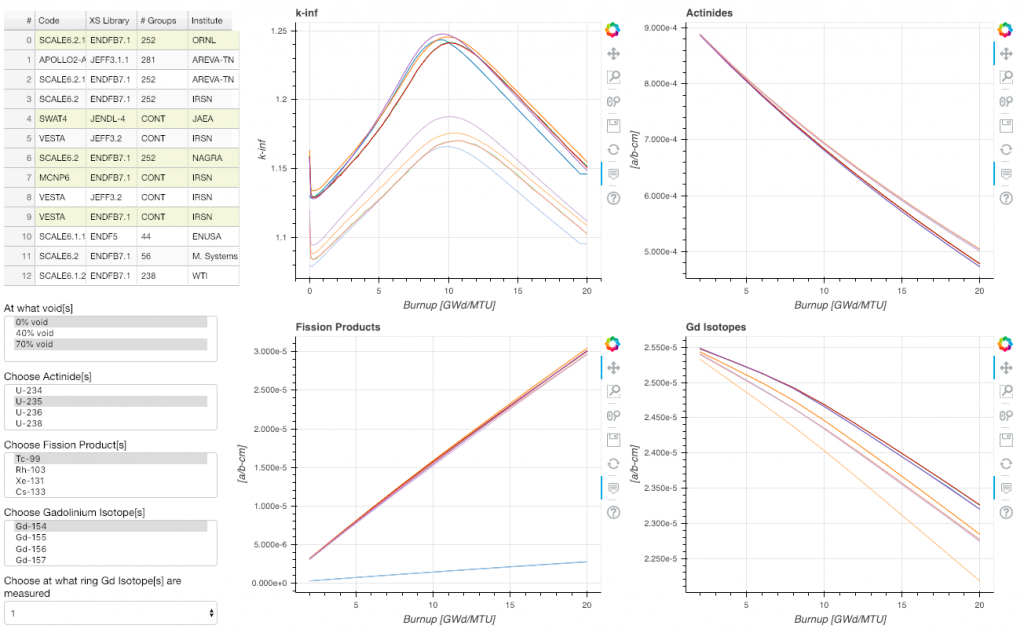OECD/NEA Benchmark Analysis
In this post I will briefly summarize the work I did while serving as a nuclear engineer at the NRC’s Office of Nuclear Material Safety and Safeguards (NMSS). At the time the NMSS Division of Spent Fuel Management was working on a multiyear R&D project to study the impact of operating parameters on Boiling Water Reactor (BWR) burnup credit. In summary, the purpose of such study was to provide the technical basis for NRC applicants to demonstrate the safe transportation and dry storage systems of BWR spent fuel. More information of this project can be found here and here.
To support the project the Working Party on Nuclear Criticality Safety Expert Group on Used Fuel Criticality (WPNCS/EGUNF) established a benchmark calculation to investigate causes of variability in results near peak reactivity using different reactor physics codes and nuclear cross section data. The WPNCS/EGUNF committee defined a 9×9 BWR nuclear fuel assembly benchmark where 25 sets of results from 9 countries and 12 institutions submitted results. Up to 5,736 data points were reported per submittal for a total of 143,400 points. I developed a user interface to evaluate the results on-the-fly.
Some of the results of this study were presented in Kobe, Japan in September 2016.*
*S. Z. Ghrayeb, V. Wilson, “Regulatory Research on Use of Burnup Credit for Criticality Safety in BWR Spent Fuel Transportation Packages”, Proceedings of the 18th International Symposium on the Packaging and Transportation of Radioactive materials (PATRAM 2016), Kobe, Japan, September 18-23, 2016.
